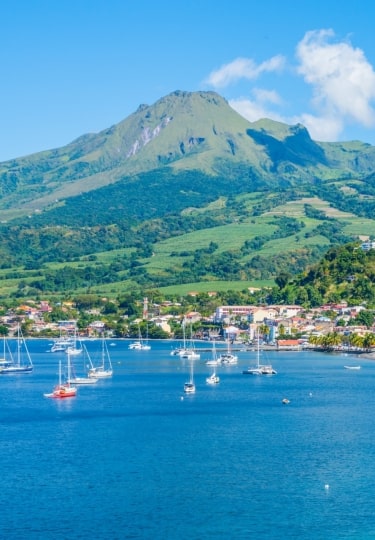Whether you enjoy history, beautiful beaches, or natural wonders, you’ll find plenty of things to do in Martinique. The island is very much part of France, making it an outlier among so many other independent Caribbean islands. You wouldn’t expect to see a Galleries Lafayette department store or a totally authentic boulangerie so far from Paris or Bordeaux.
This familiarity, not to mention its golden sands, warm water, and glorious climate, makes the island a popular holiday choice for French people. Martinique’s special identity comes from that homogeneity, setting it apart from those neighbors that are more varied in their visitors.
With French style and cuisine, Caribbean loveliness, and Atlantic wildness, Martinique is a destination with a surprise at every turn. Embrace its tropical beauty, cosmopolitan style, and French quirkiness.
Explore Ruined Saint-Pierre
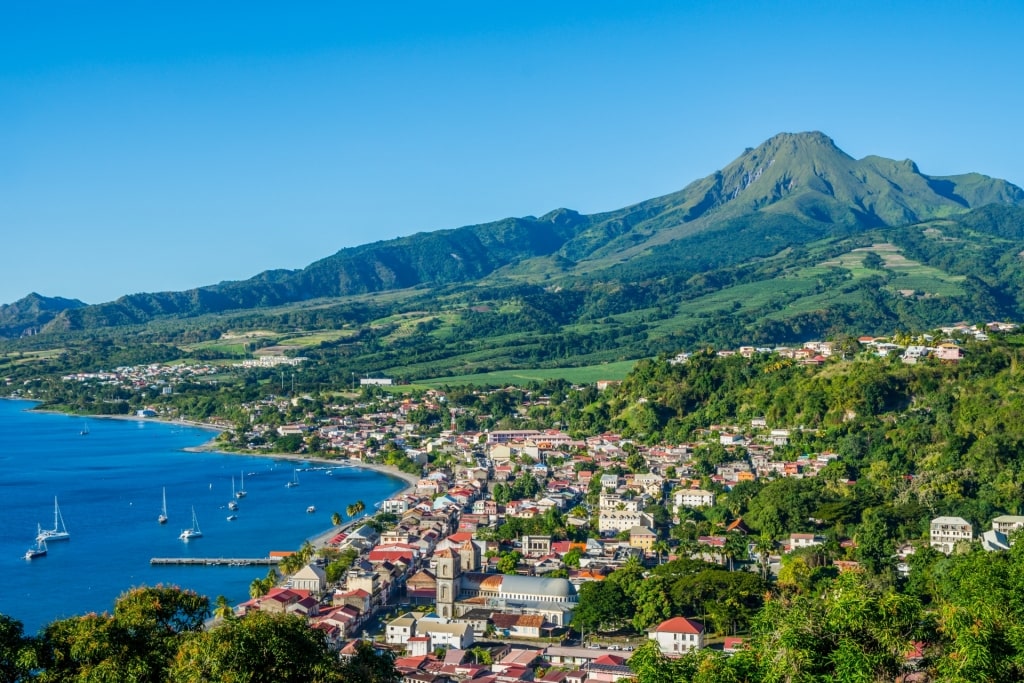
Saint-Pierre
Mount Pelée is still active, although no eruption has been as cataclysmic as that of 1902. This was one of the deadliest of the 20th century, enveloping the town of Saint-Pierre and killing 30,000 people.
Prisoner Louis-Auguste Cyparis, thrown into jail for being drunk, was one of only three survivors. The town’s Volcano Museum, one of the best things to do in Martinique, tells his story and that of the eruption, while showing life there beforehand.
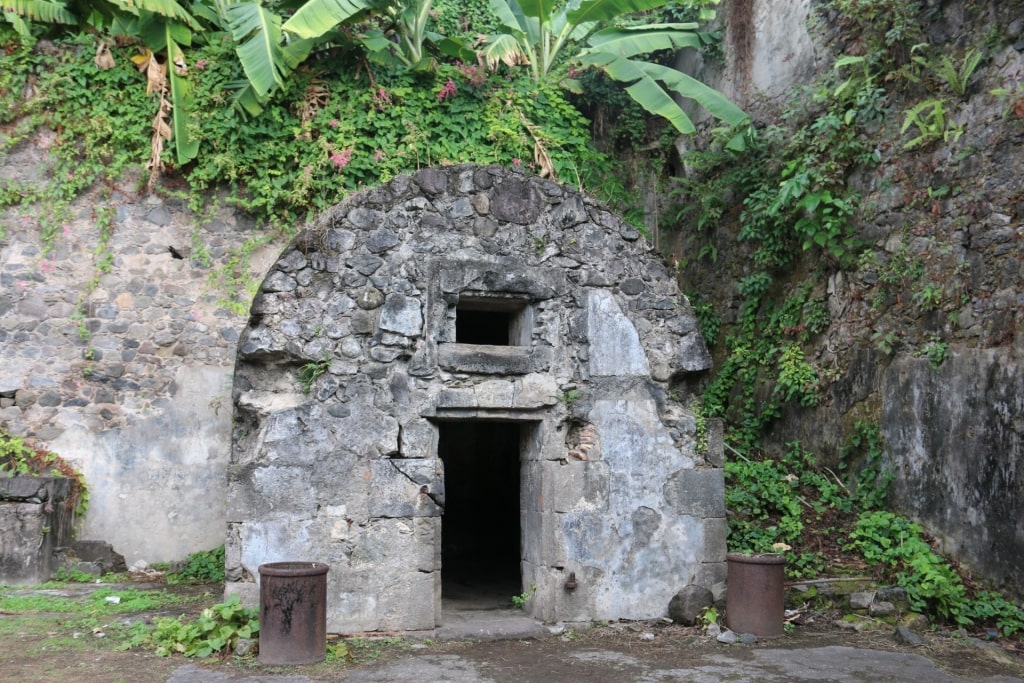
Cyparis’ prison
Before the eruption, Saint-Pierre was known as the “Paris of the Caribbean” for its wealth, grand buildings, and rich cultural life. The remains of the Grand Theatre and Cyparis’ tiny prison can still be seen on a tour of these evocative ruins.
The town, though, has been rebuilt and you’ll see candy-colored buildings lining the waterfront and restaurants where locals tuck into the plat du jour and a carafe of red, just as they would in France.
Taste a Rhum Agricole
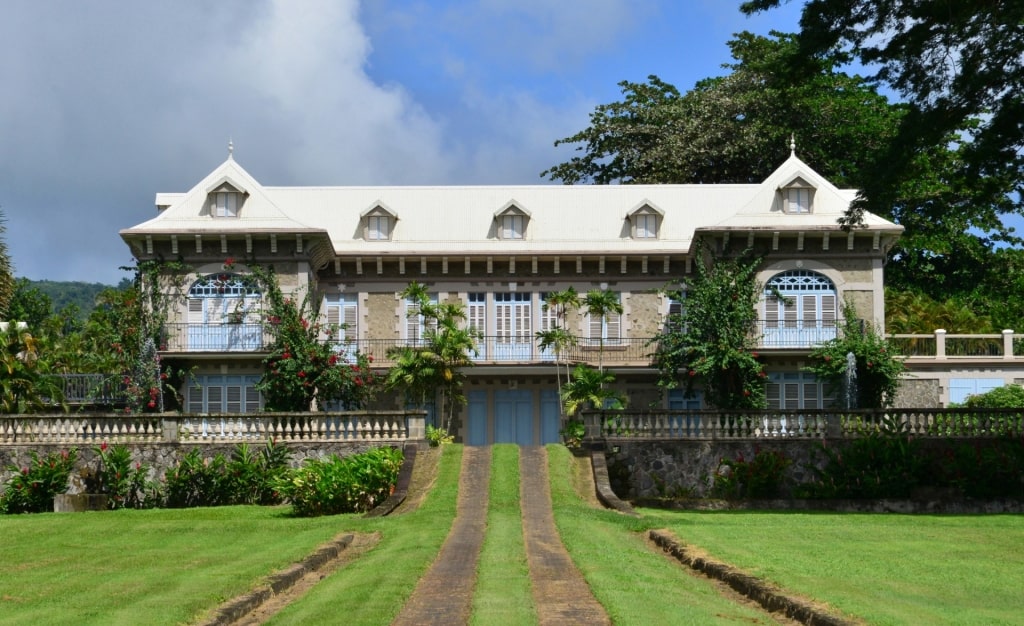
Depaz Rum Distillery
In 1917, Victor Depaz founded a rum distillery on the slopes of Mount Pelée. Only 15 years earlier, Saint Pierre, then the largest rum port in the world, had been wiped out by its eruption.
Today, you can tour the chateau he built and the award-winning Depaz Rum Distillery. Of course, the highlight of any visit is a tasting of their range.
The rhum agricole here is typical of the light French-style rums made from sugarcane juice. It’s very different in flavor to the dark ones, made from molasses, of most other British or Spanish Caribbean islands.
These light Depaz rums are spicy and lend themselves well to cocktails. Darker ones in the range, matured in oak casks for at least three years, are best drunk straight as an after-dinner digestif.
Read: Best Caribbean Rum Distilleries, Tours & Tastings
Follow Columbus & Gauguin
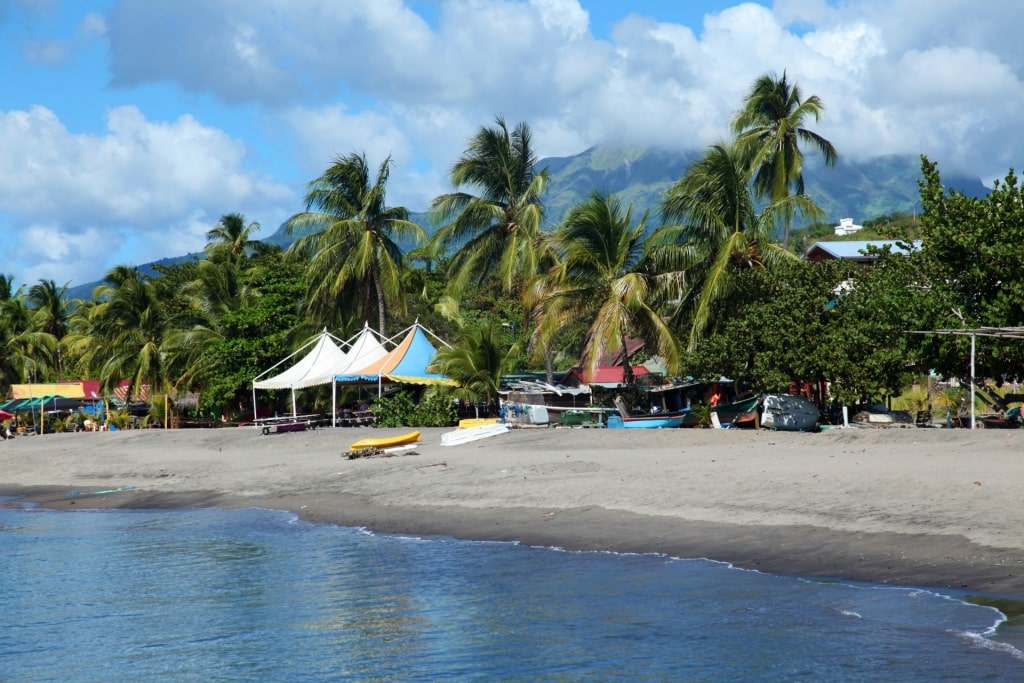
Le Carbet
Le Carbet is a municipality on the Caribbean coast about 30 minutes north of Fort-de-France. It’s where Columbus first set foot on Martinique in 1502 and near where you’ll find Saint-Pierre.
In the town of Le Carbet, you’ll find a Gallery of History. This museum highlights the links between the native Arawak and Carib people and the sea.
One visitor enchanted by the light here was Paul Gauguin, who spent five transformative months on Martinique in 1887. A small museum has reproductions of the works he painted here and those of fellow artist Charles Laval.
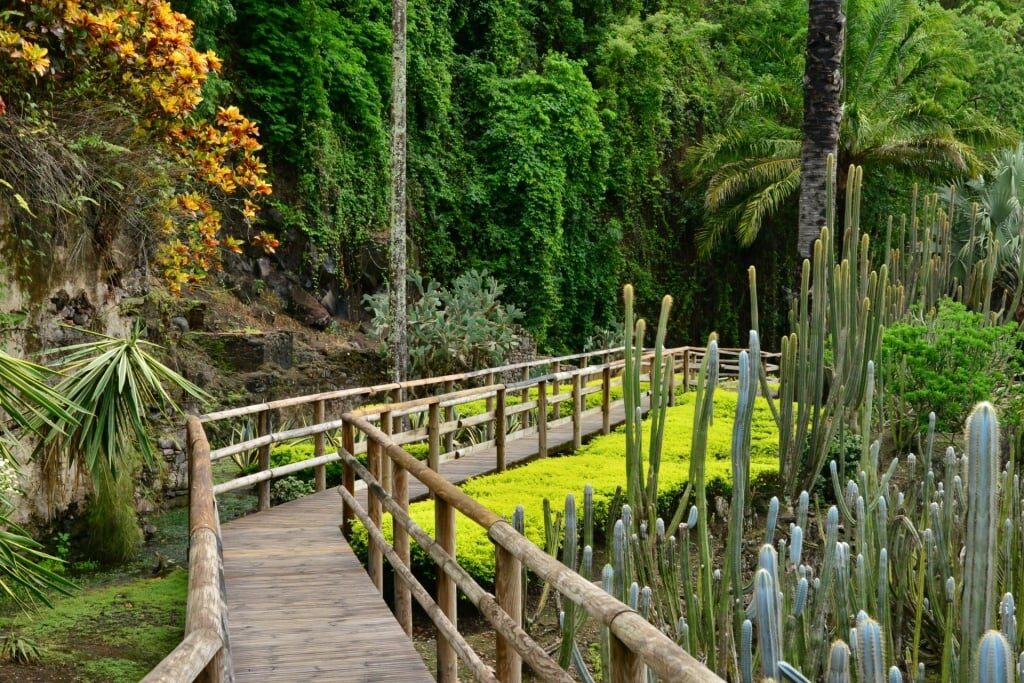
Habitation Latouche
Habitation Latouche was one of the oldest sugar plantations on Martinique, dating to 1643. It is now an extensive botanical garden, with a small zoo specializing in native animals such as leopards and monkeys.
See a Mini Montmartre

Sacré-Coeur de la Balata
The distinctive Sacré-Coeur de la Balata, overlooking Fort-de-France, may look familiar. That’s not surprising, as it is a perfect one-fifth scale replica of Sacré-Coeur in Paris’s Montmartre.
Consecrated in 1925, “Martinique’s Montmartre” was built to remember France’s losses in the Great War of 1914-1918. Made of concrete, its interior is much less ornate than its namesake, befitting its somber dedication.
The May 1902 Mount Pelée eruption was also a recent event, having destroyed every house in and around Saint-Pierre. This led to rapid growth in the population of Fort-de-France, driving demand for a new church.
The setting on Morne Savon brings great views for anyone who visits. You can see over Fort-de-France and its bay to the Caribbean beyond.
Stroll Through Balata Garden
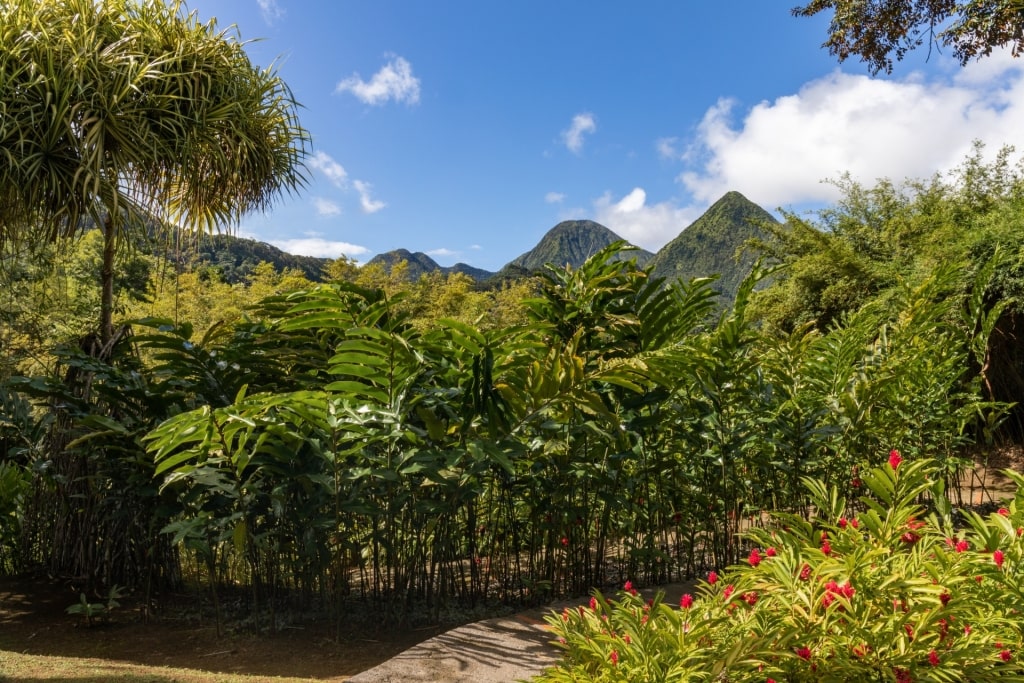
Balata Garden
Jardin de Balata is a beautiful botanic garden just outside Fort-de-France. It’s a lush wonderland of tropical plants, flowers, and trees, laid out along scenic paths.
For more panoramic views, take to the Tree Top Trail which gives you a view from on high. Up here, you’re level with many of the birds that make the garden their home.
Among the thousands of tropical plant species from all over the world, the highlights are orchids, bromeliads, and palms. You can study a kapok tree and contemplate a Japanese pond.
The gardens have a small restaurant and a lovely souvenir shop, full of well-chosen items. From handmade crafts to children’s books, it’s a good source of unusual gifts.
Go Hiking

View from Mount Pelée
There are not many places in the world where you can hike up or around an active volcano. The views from 4,580-foot Mount Pelée are breathtaking, taking in the whole island, a gem in a blue Caribbean setting.
If time is too short for the drive north and the hike up Mount Pelée, there are many other options. Starting at the Jardin de Balata, the 2.5-mile Circuit d’Absalon is an easy loop trail, perfect for birdwatchers.

Mount Pelée
Following a clear path through thick forest, it should take less than two hours. The initial climb is steep so you do need good shoes, especially after rain.
This is part of the Route de la Trace, a 25-mile path first cut by Jesuit missionaries in the 17th century. It connects Fort-de-France to the small town of Ajoupa-Bouillon, passing tropical forest, ravines, and several waterfalls.
Read: Best Hiking in the Caribbean
Visit Habitation Clément

Habitation Clément
A landmark in the town of Le François, this sprawling estate is an art center and rum distillery. It also has beautiful tropical gardens, where a shaded walk on a hot day is a real delight.
The Fondation Clément opened an impressive new exhibition space in 2016 to hold the best in contemporary Caribbean art. It hosts an annual art show and other regular cultural events.
The elegant Habitation Clément was once the main residence of the Clément family. It’s a grand, plantation-style home, overhung by ancient trees.
The old distillery is now dedicated to explaining the rum-making process, complete with rum tastings. Still an active distillery, the cellars hold half a million gallons of rum.
Walk Around Fort-de-France
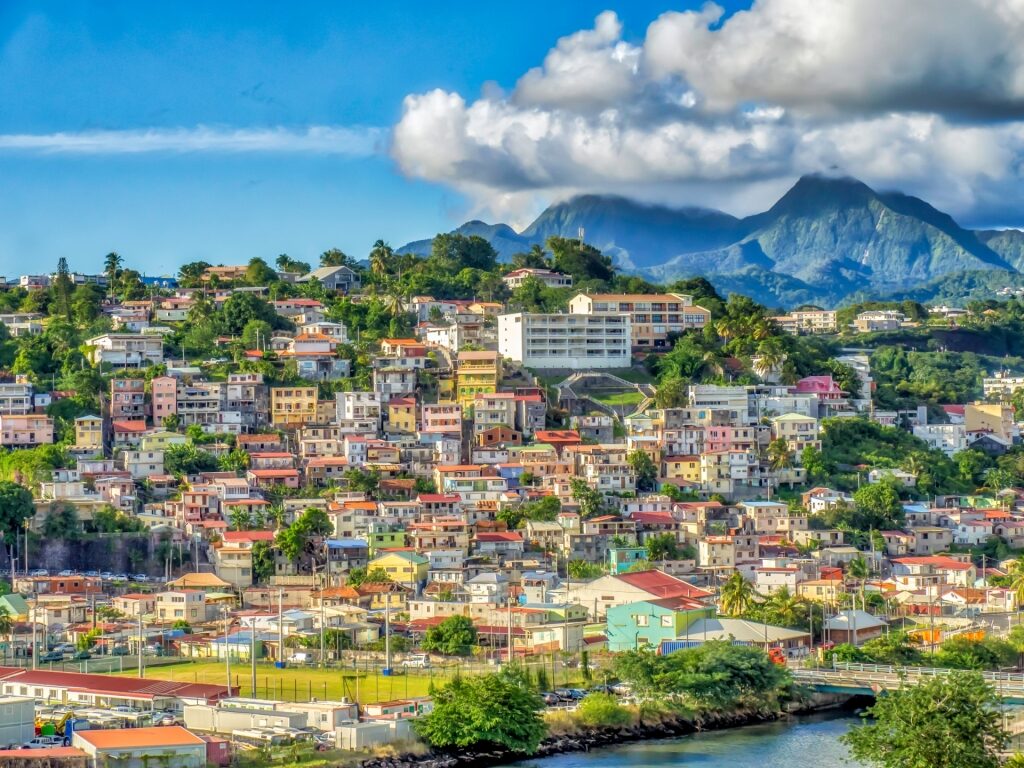
Fort-de-France
Fort-de-France, Martinique’s capital since 1680, is a heady blend of French influences with Caribbean vibrancy. You’ll see this made reality in sights such as the Schoelcher Library, the Grand Marché, and Fort Saint Louis.
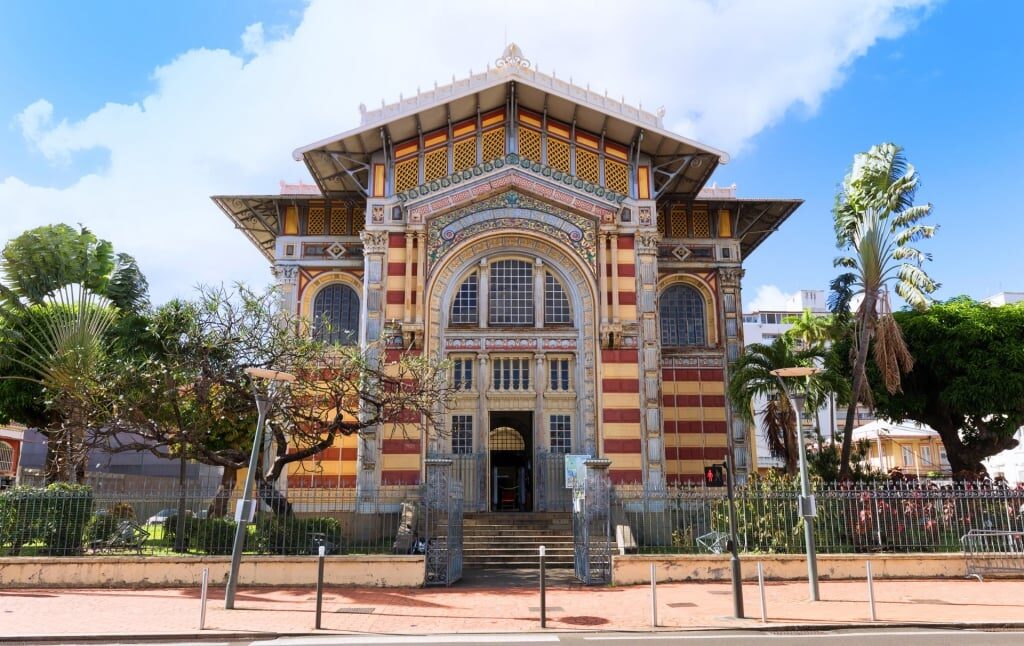
Schoelcher Library
The architect of the beautiful Schoelcher Library was Pierre-Henri Picq, who also designed Cathédrale St Louis. Built of iron in Paris in 1889, it is a memorial to abolitionist Victor Schoelcher that helps preserve Martinique’s cultural heritage.
The covered Grand Marché, also called the Spice Market, opened in 1885 as another vast iron structure. Full of the colors and smells from the tropical produce on sale, it has restaurants and craft sellers.
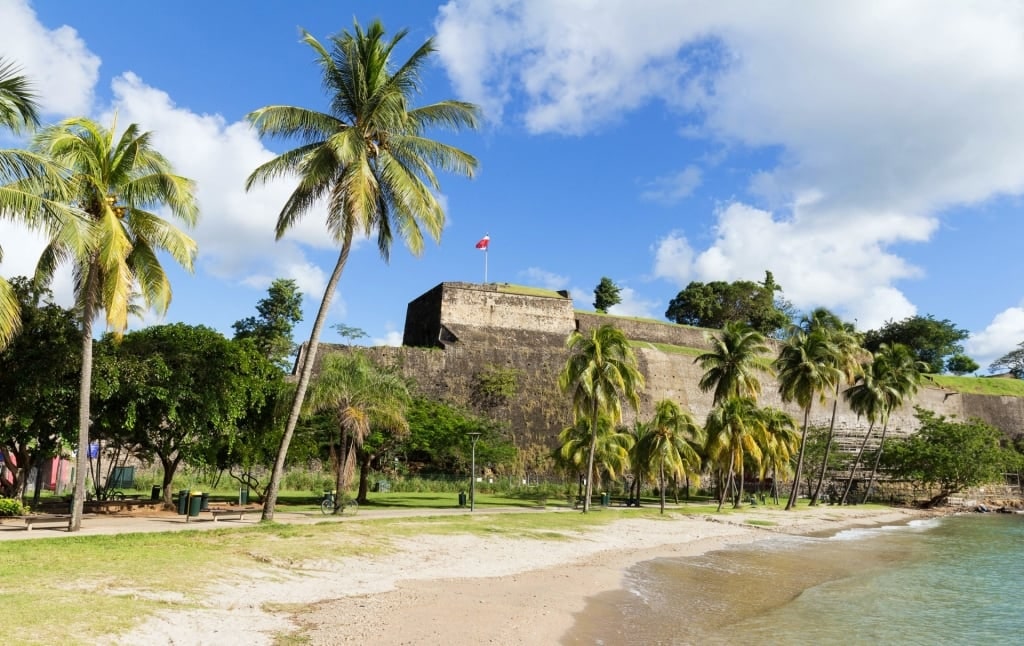
Fort Saint Louis
Fort Saint Louis is still a French naval base, but you can tour the original imposing fortifications. Take in the panoramic views from the ramparts, where iguanas sun themselves, and enjoy its small museum.
Be Awed by an Iron Cathedral

Cathédrale St. Louis
You can argue about whether Italy, France or Spain has the more magnificent cathedrals. Holding up the French side, Martinique has its own contender for grandeur: Cathédrale St. Louis.
First consecrated in 1657 but rebuilt several times after fire or earthquake, the current building dates to 1895. It is named for King Louis, who also gave his name to St, Louis, MO and the cathedral in New Orleans.
The external Gothic-revival style hides an amazing Industrial Age interior. Built of iron by Pierre-Henri Picq, a contemporary of Gustav Eiffel, this airy framework creates a soaring interior, brightly lit by large stained glass windows.
If you can visit during a service, the historic organ fills that vast space with wonderful music. Outside again, admire the 190-foot-high steeple, one of the last sights visible from ships leaving Fort-de-France.
Experience La Savane des Esclaves
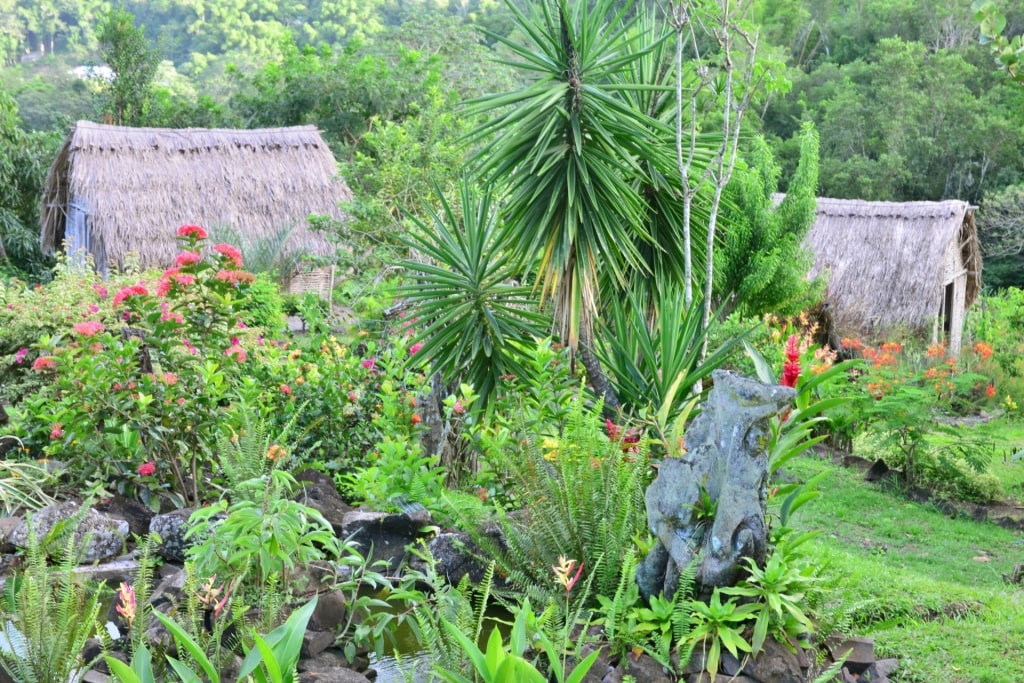
La Savane des Esclaves
The “Savannah of Slaves” is a fascinating outdoor museum in the village of Trois-Îlets, a short ferry ride from Fort-de-France. It’s the passion of local man Gilbert Larose, encompassing four centuries of Martinique history.
You can see a typical pre-Hispanic indigenous village and then the conditions endured by rural African slaves. The types of huts and gardens made by runaways and later, freed slave communities, are also faithfully reconstructed.
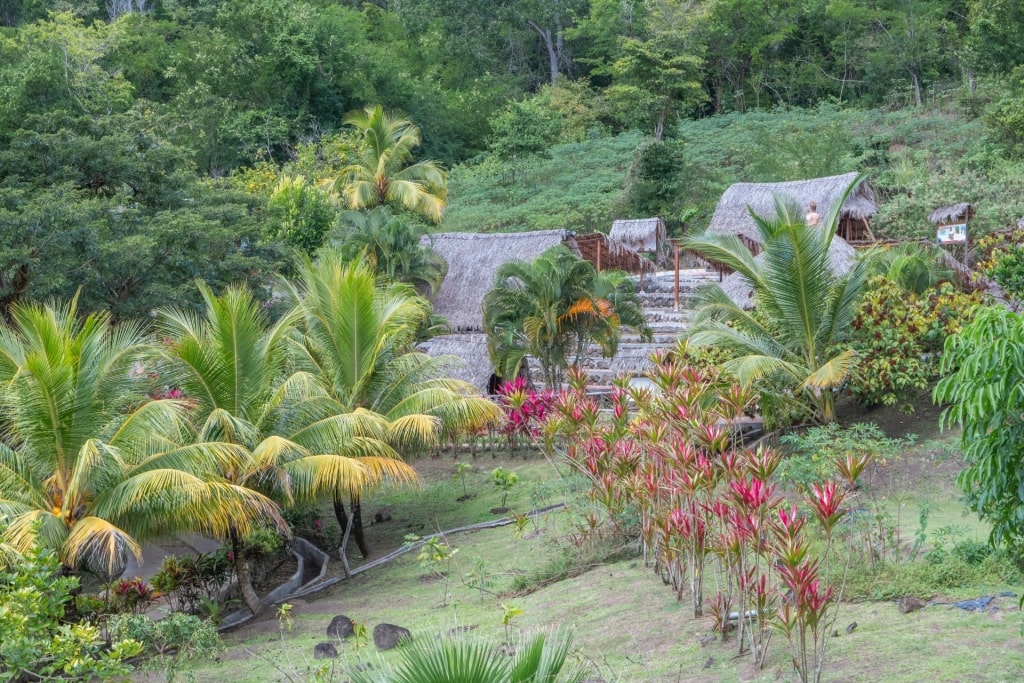
La Savane des Esclaves
Slaves on Martinique, who were two-thirds of the population before abolition in 1848, mostly had to grow their own food. After slavery ended, workers were imported from Asia as cheap labor, leaving the freed Africans to continue fending for themselves.
Guided tours telling this powerful, often-overlooked story are in French, usually with a translator available. There are written guides in English and other languages.
Discover the Empress Josephine
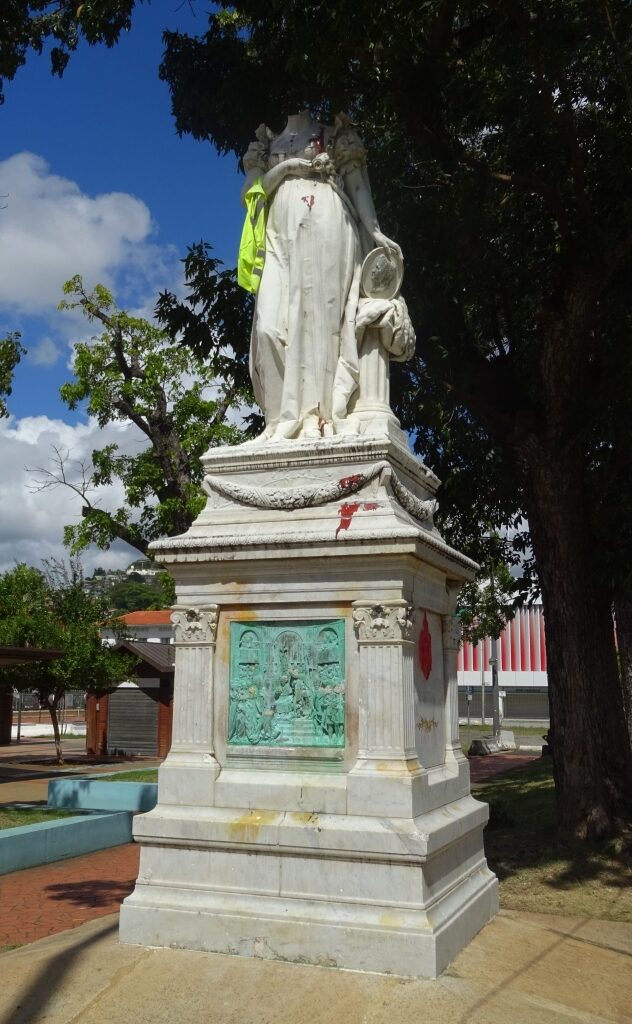
Statue of Empress Josephine Photo by Gregor Julien Straube on Wikimedia Commons, licensed under CC BY-SA 4.0
Josephine de Beauharnais, Napoleon Bonaparte’s wife, was born in Trois-Îlets, just across the bay from Fort-de-France. Her birthplace is now a small museum dedicated to her and the times she lived in.
In Fort-de-France’s pretty waterfront La Savane Park, you’ll find a statue of Josephine. It’s often daubed in red paint, a reminder that Napoleon is a controversial figure in Caribbean history for his ambivalence on slavery.
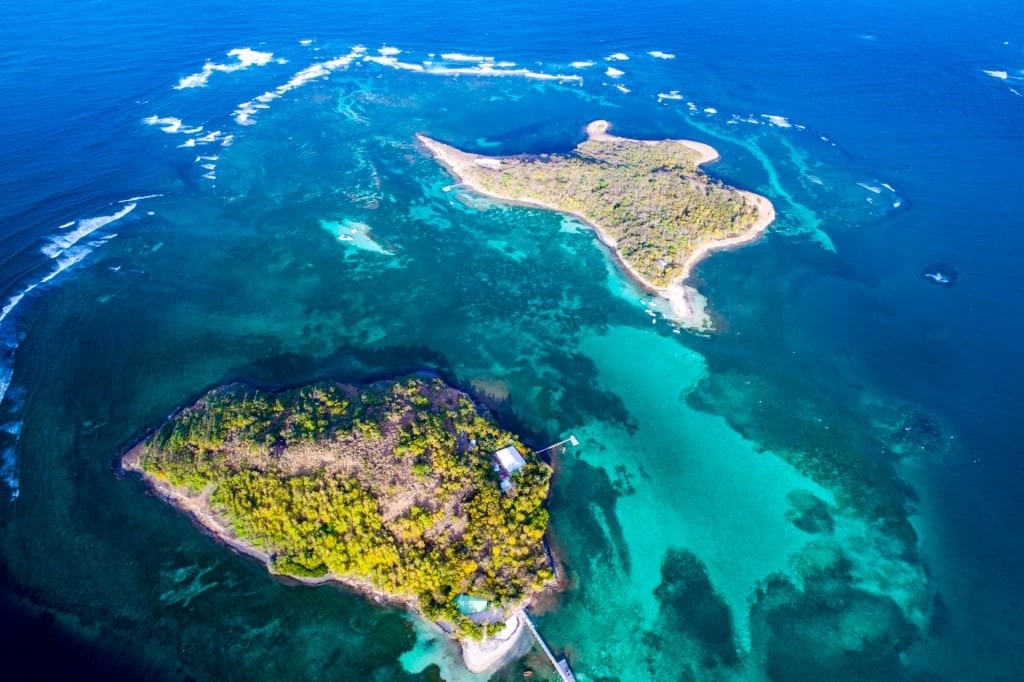
Josephine’s Bath Photo by Mickaël BRUNO on Wikimedia Commons, licensed under CC BY-SA 4.0
On the south coast is François Bay, which has eight pretty islets in it. The shallows between them are known as the “white shoals”, one of which is called “Josephine’s Bath”.
Standing only knee-deep in warm water, hundreds of yards offshore, is a unique experience. Who knows whether the Empress herself ever bathed here, but the “rum baptism” offered on snorkeling tours is great fun.
Head to the Beach
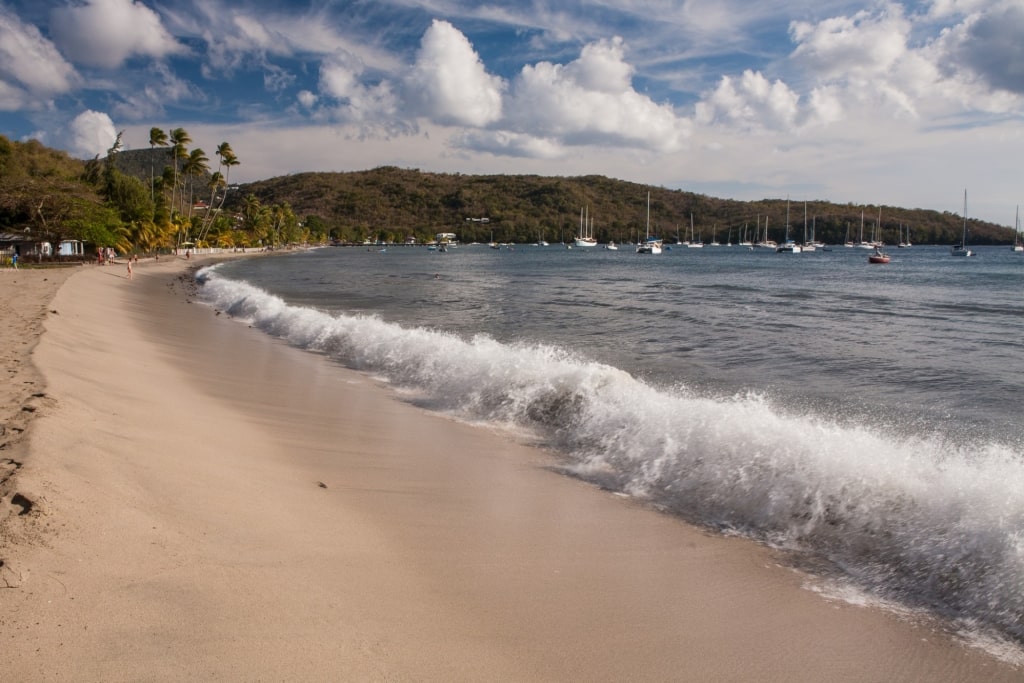
Grande Anse d’Arlet
This deep bay of Grande Anse d’Arlet on the calm west coast of Martinique is well sheltered by its two long headlands. The calm water, almost transparently clear, is perfect for swimming and snorkeling.
At the opening of the bay is an underwater trail for you to follow. Snorkel or dive to see starfish, with a very good chance of spotting green sea turtles.
There are several beaches in the bay, with the biggest being Grande Anse. It’s lively with families at weekends but quiet during the week.
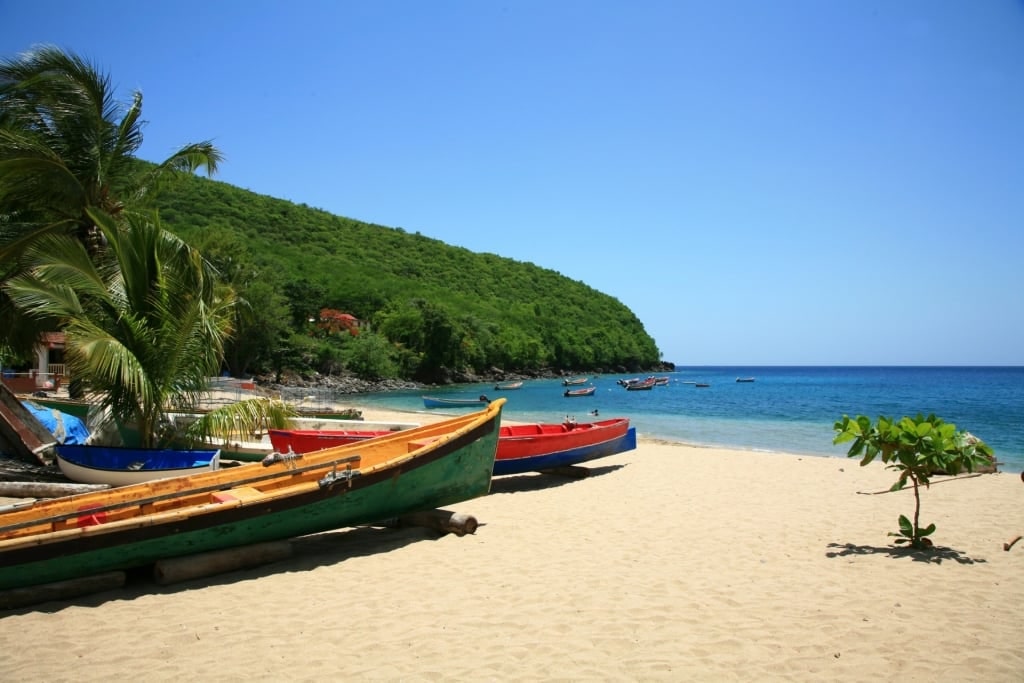
Anse Dufour
A promenade behind the beach is well served with restaurants and bars. A rugged hiking trail connects Grande Anse to the equally lovely beach at Anse Dufour, around Morne Réduit.
Snorkel the Bat Cave
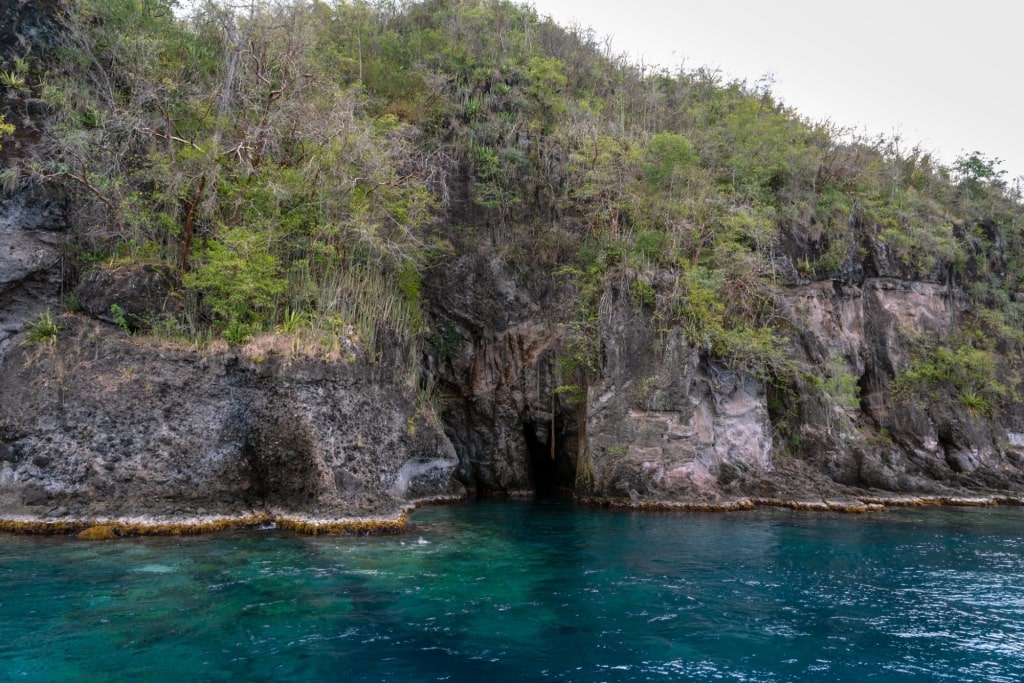
Bat Cave
With all its many other attractions, Caribbean beauty still remains central to Martinique’s appeal. The warm, clear waters are wonderful to see and a snorkeler’s delight.
Between the Caribbean Sea, the Atlantic Ocean, and the soaring sky, Martinique has countless shades of blue. There is no better way to take them in than on a snorkeling tour.
Many tours include the unique experience of the Bat Cave near Anse Dufour. To swim in transparent water, surrounded by tropical fish, while bats echo above, is a lifetime memory.
These snorkel tours will also take in a mangrove and beach environment for a wider variety of marine life. With all equipment provided and a knowledgeable guide, it’s informative as well as fun.
Read: Best Snorkeling Spots in the Caribbean
Dive at Diamond Rock
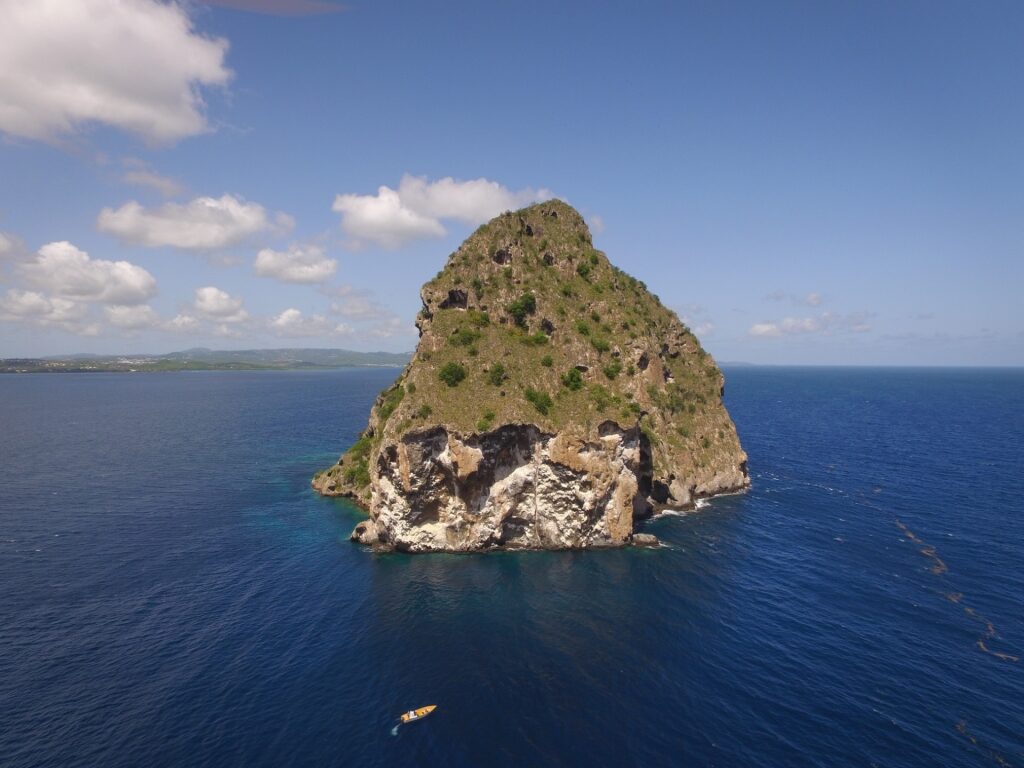
Diamond Rock
This picturesque rock off the southern coast of Martinique was fortified by the British during the Napoleonic Wars. It played a strategic role against the French then but is now best known as an amazing dive site.
Named for its distinctive shape, “Rocher Du Diamant” is uninhabited except by birds. Underwater, it also comes alive with corals, sponges, moray eels, and other abundant marine life. If you’re a snorkeling enthusiast, a visit here is one of the best things to do in Martinique.
The volcanic peak is the center of a marine reserve, so boats cannot land. However, from the sea you can still see the remnants of old fortifications and living quarters.
Boat tours will allow you to snorkel in the clear waters, or dive. Divers come from all over the world to explore its remarkable caves and drop-offs.
Read: Best Spots for Scuba Diving in the Caribbean
Learn at Château Dubuc

Château Dubuc
On the east coast, Château Dubuc now lies in ruins but its remains and the extensive grounds hold many stories. You can follow these on a self-guided audio tour or with a guide.
The Dubuc family settled here from Normandy in the mid-1600s, building up a sugar plantation. This wild setting enjoys beautiful views and sits among a lush landscape.
In the late 1700s, heiress Aimée du Buc de Rivéry was returning from her schooling in Paris when she was lost at sea. Legend has it she was kidnapped by pirates and sold into the Ottoman harem in Istanbul.
That story may be fanciful, but the family was certainly heavily involved in slavery themselves. Château Dubuc tells that side of its history too and the hours will pass here very quickly.
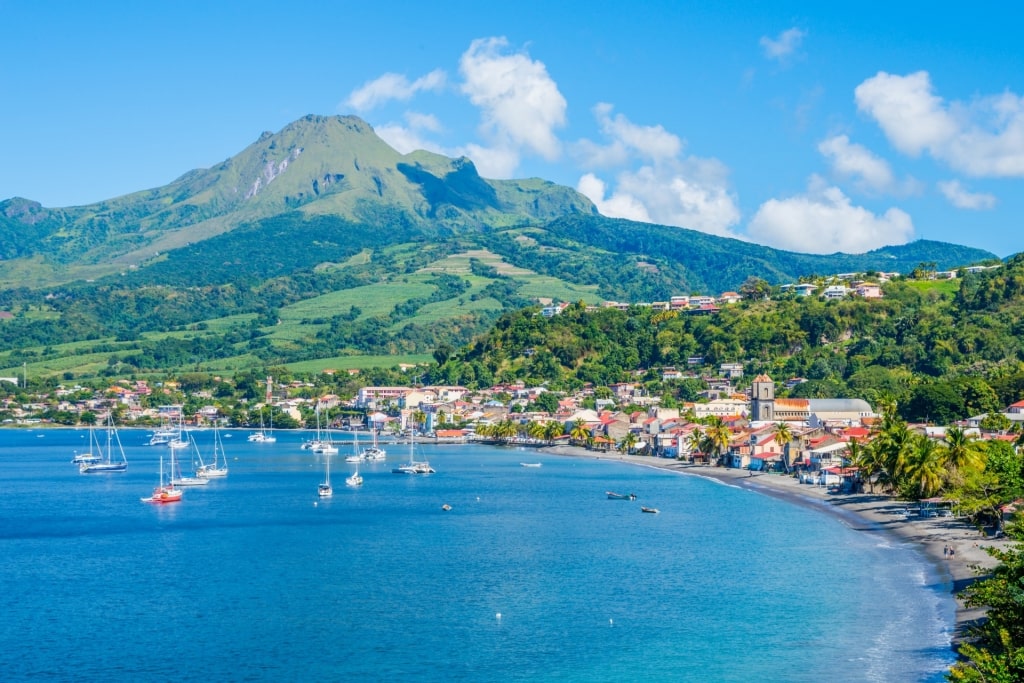
Saint-Pierre
Are you inspired to visit the beautiful island of Martinique? Then browse Celebrity’s Martinique cruises to find the perfect Caribbean vacation.
